Inside Titan: Titanic-spotting submarine steered by video game controller
The US Coast Guard has confirmed that the Titan submersible experienced a “catastrophic implosion” when it submerged to view the Titanic wreckage, killing all five passengers aboard.
The rescue operation continued past the projected deadline for the available oxygen supply before it was called off on Thursday when several parts of the Titan were found in a “debris field” approximately 1,600 feet from the wreckage of the Titanic at the bottom of the sea floor. In a statement to The Independent, OceanGate — the private company that offers the $250,000-a-seat expedition — confirmed that the five passengers aboard the vessel are now believed dead.
The Coast Guard has since revealed that the US Navy detected sounds consistent with an implosion sometime after the Titan lost contact with its mothership just an hour and 45 minutes into its descent on Sunday (18 June).
The information was “immediately shared” with the Incident Commander but “the decision was made to continue our mission as a search and rescue” because the noise was “not definitive at the point”, a spokesperson with the US Coast Guard told The Independent.
Follow live coverage of the missing Titanic sub in our live blog here.
The resting place of the Titanic lies about 370 miles off the coast of Newfoundland, Canada, at a depth of around 12,500ft below the surface, with trips to visit it typically involving a two-hour descent.
Particular details about the Titan, a cramped metal cylinder accommodating four passengers and a pilot, emerged soon after it first went missing on Sunday.
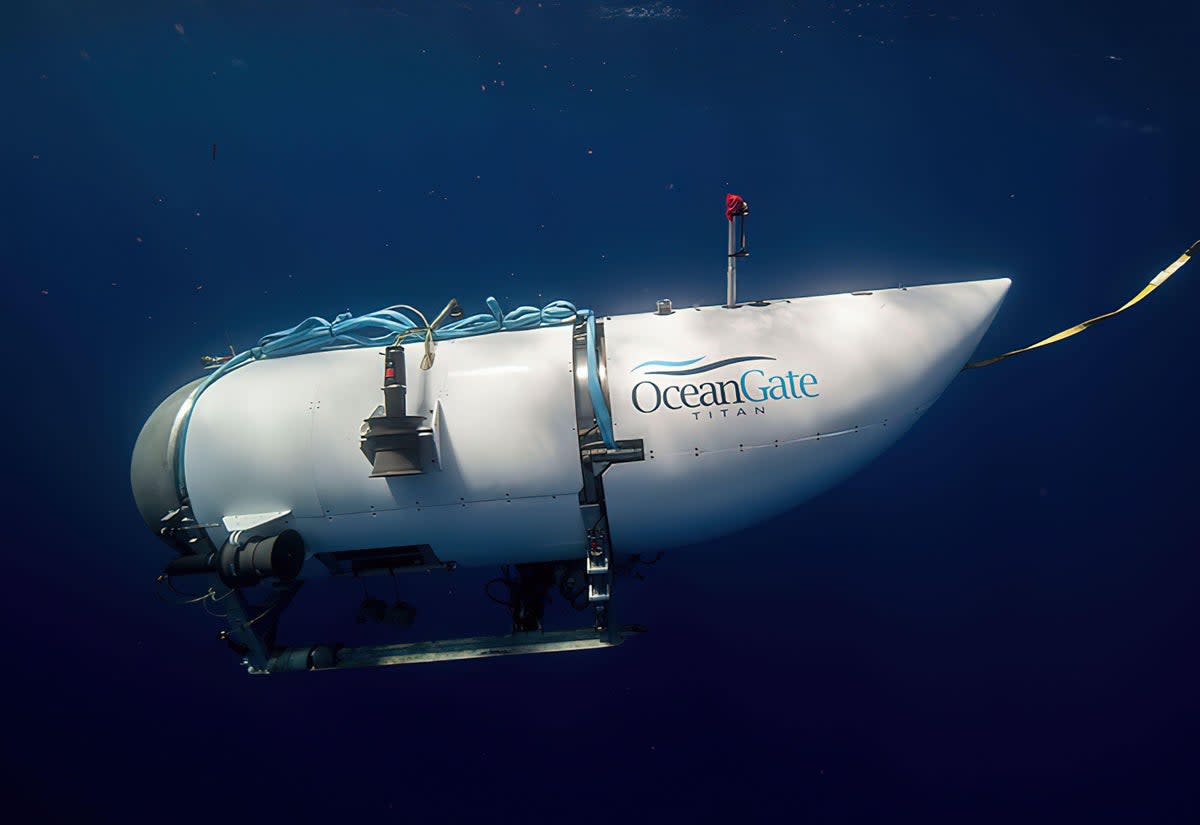
Measuring 22ft long by 9.2ft across and 8.3ft high, the sub consists of an aerospace-grade carbon fibre hull with titanium hemispheres at each end, as well as a fibreglass hull insert to shield the passengers and electronics from condensation.
A real-time monitoring system provides a running analysis of the impact changing pressure is having on the hull as the craft descends deeper and deeper into the ocean in the interests of safety.
The vessel weighs 10,432kg in total and can travel at a maximum speed of three knots, made possible by Four Innerspace 1002 electric thrusters.
The tourists and scientists who typically ride in it are able to look out via a large viewport window, their perspective enhanced by Sub C Imaging 4k Rayfin exterior cameras that capture the surrounding marine environment in a live feed that is displayed on a large digital display.
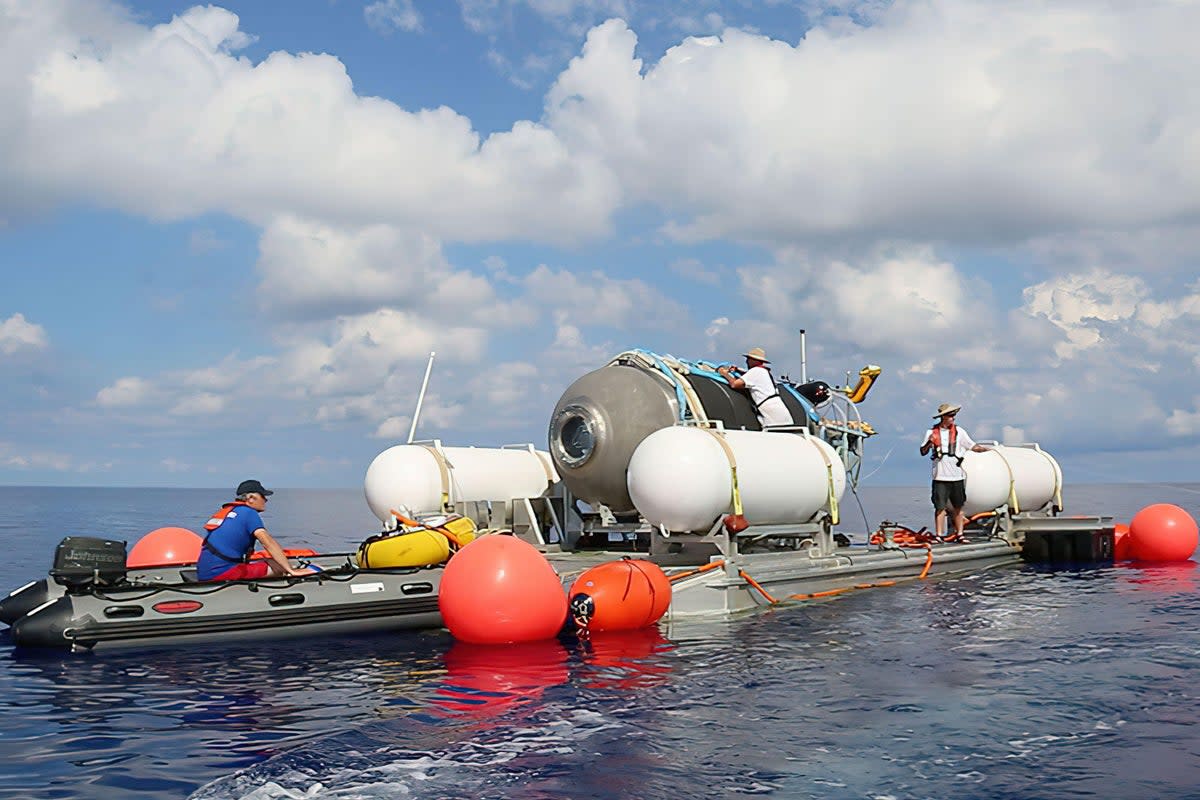
There is little by way of comfort inside but there is a toilet, although privacy is limited because it is situated right next to the viewing window.
Most astonishingly, the craft is controlled by a generic video games controller – specifically a Logitech F710 Wireless PC Gamepad from 2011, according to gaming expert Matthew Ruddle – and, rather than using a GPS for navigation, it communicates with a tracking team aboard a surface ship, in this case the Polar Prince, via text messages.
A clip of a CBS Sunday Morning featurette about the sub from November 2022 that has gone viral in light of this week’s disaster shows OceanGate CEO Stockton Rush, who was aboard the vessel that imploded after vanishing on Sunday, cheerily pointing out handles affixed to the ceiling of the craft that he says he bought from Camper World but denying that the vessel has been “MacGyvered” or “jerry-rigged”.
“There’s no switches and things to bump into, we have one button to turn it on,” Mr Rush explained to reporter David Pogue.
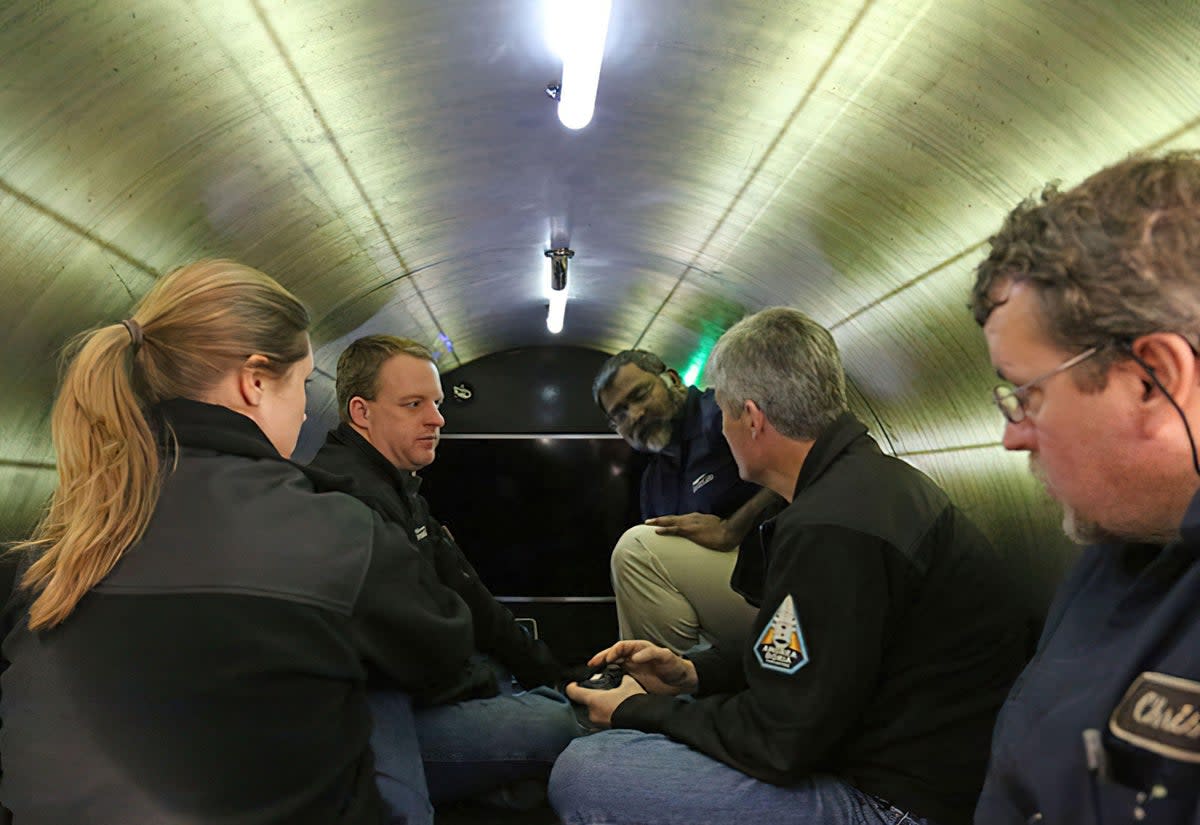
“Everything else is done with touch screens and computers, and so you really become part of the vehicle and everybody gets to know everyone pretty well.”
The Titan was reportedly built with the help of a team of engineering consultants from Nasa’s Marshall Space Flight Center, who offered guidance during the development stage.
Speaking to GB News on Tuesday morning, David Scott-Beddard, chair of the British Titanic Society, outlined how unique the proposition offered by the company is, explaining: “The OceanGate Titan, this particular submersible, is the only one currently capable in commercial use that can take passengers down to the wreck... It’s one of only five submersibles that can reach this depth.”
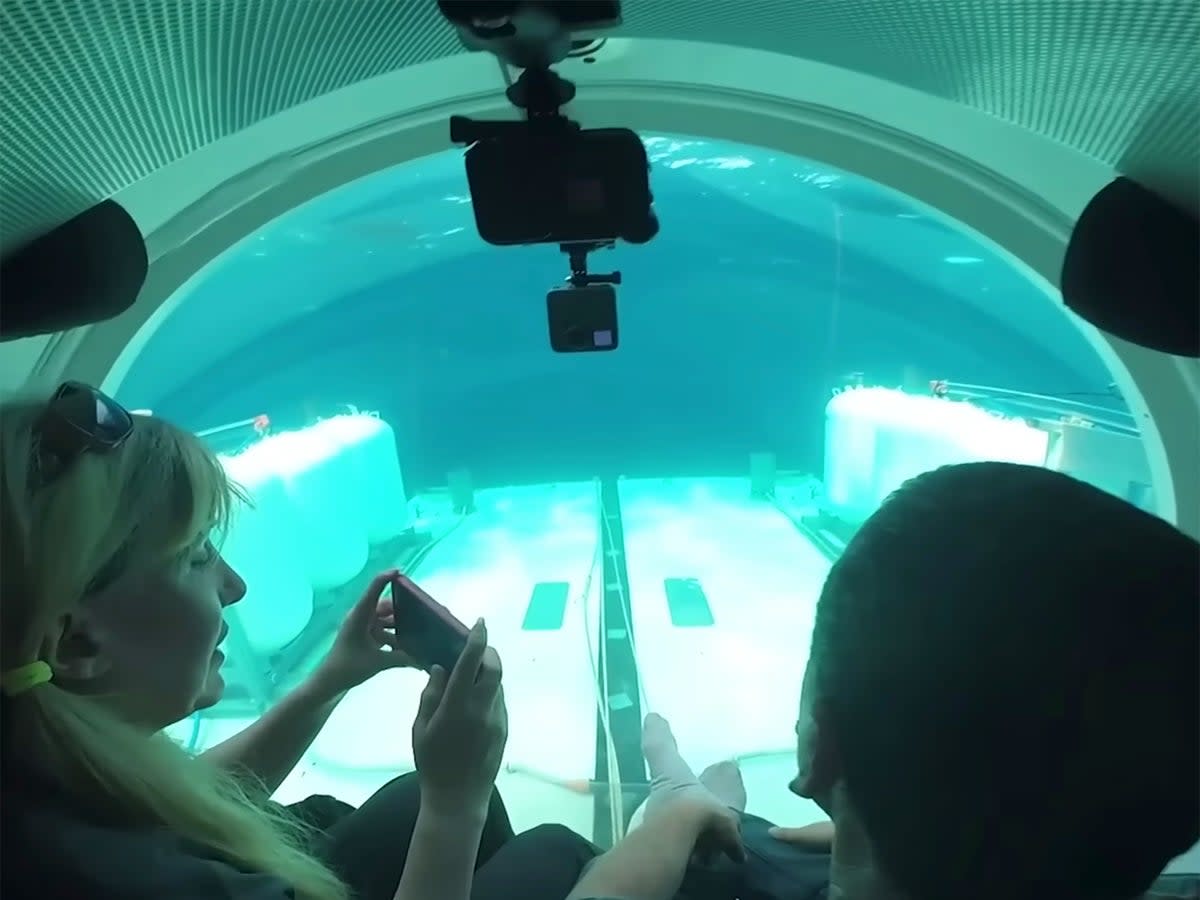
Similarly, G Michael Harris, a specialist Titanic expedition leader who said he has previously worked with the pilot of the stricken Titan, told Jesse Waters on Fox News: “More people have been to outer space than to this depth of the ocean and when you’re diving in these situations you have to cross your T’s, dot your I’s, you have to have everything absolutely perfect and by the book... Throw in a bunch of tourists and a new sub that was created over the last several years… it’s not looking good.”
As to the experience of being a passenger on the Titan, New Yorker Mike Reiss, who said he had made three dives in it, told BBC Breakfast that the sub is “a beautifully designed craft, I can’t disparage it, but it’s meant to go down further than any other vessels can go... If it’s down at the bottom, I don’t know how anyone’s going to be able to access it, much less bring it back up.
He continued: “The phrase we keep hearing is ‘they’ve lost communication’ and I’ve gotta say I did three separate dives, I did one dive to the Titanic and two more off the coast of New York and every time they lost communication.
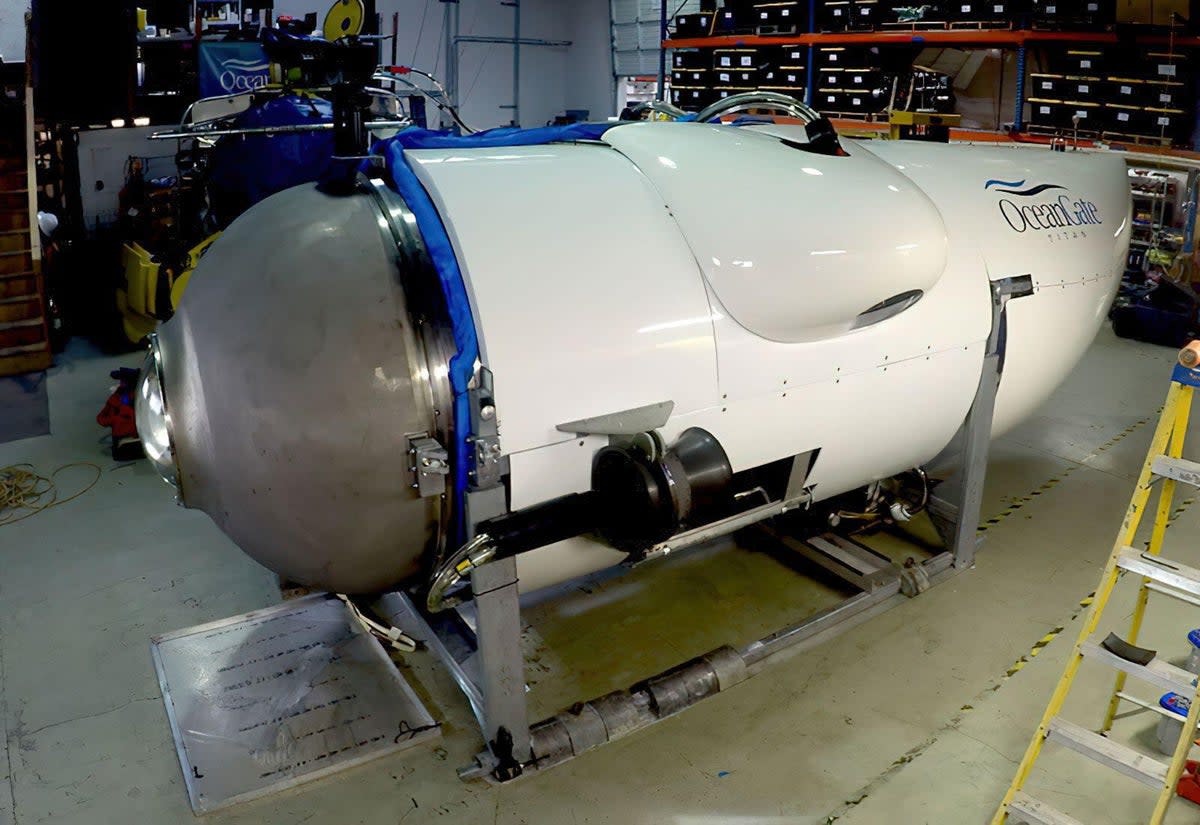
“And, again, this is not to say this is a shoddy ship or anything. It’s just, this is all new technology and they’re learning it as they go along.
“You have to remember the early days of the space programme or the early days of aviation where you just make a lot of mistakes on the way to figuring out what you’re doing.”
OceanGate Expeditions founder and CEO Stockton Rush, British billionaire Hamish Harding, renowned French diver Paul-Henri Nargeolet, Pakistani businessman Shahzada Dawood and his 19-year-old son Suleman were on board the Titan. All five passengers are presumed dead following the discovery of debris on Thursday.
The Unified Command - the Coast Guard, US Navy, and Canadian Coast Guard - decided to not disclose “unconfirmed” audio consistent with an implosion shortly after the Titan went missing because they did not want to disrupt the search when the priority was “making every effort to save the lives of all on board”.
The Coast Guard said it is unable to confirm the exact time of the “acoustic anomaly” but said it was “sometime after communications were lost between Sunday and Monday” when additional equipment, including from the US Navy, which could analyse and receive acoustic data, was deployed to the search site.
The service says that ROVs will remain in place but that it will begin to pull back equipment over the next 48 hours.
“This is an incredibly unforgiving environment out there on the sea floor. The debris is consistent with the catastrophic implosion of the vessel. We will continue to work and search the area down there but I don’t have an answer on prospects at this time,” said Rear Admiral John Mauger of the US Coast Guard.
The Rear Admiral said that sonar buoys had been in the water for the past 72 hours and that they had not picked up any evidence of an implosion, suggesting that it had happened early on in the dive.
